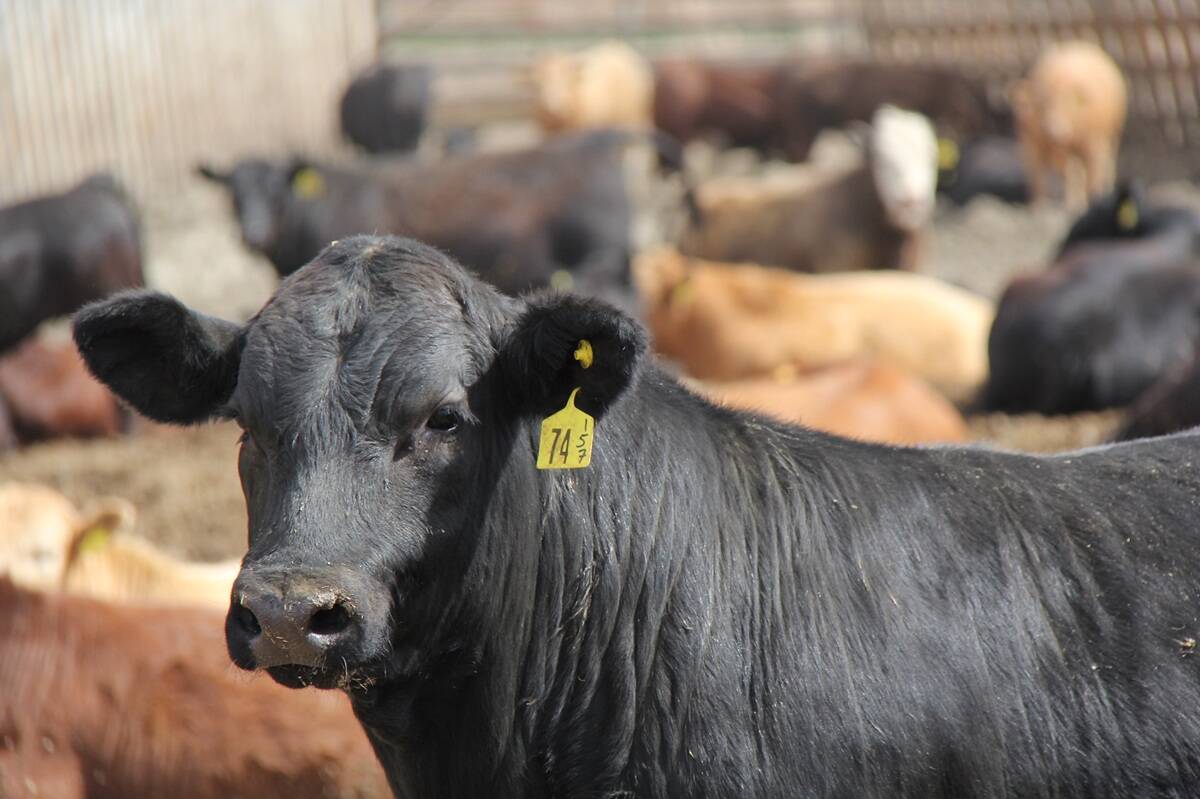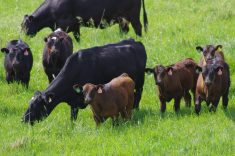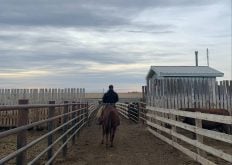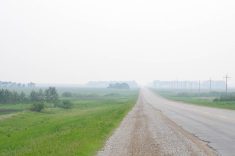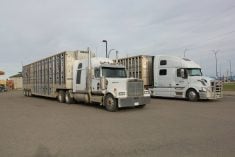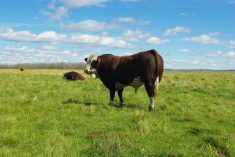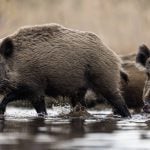Chances are you’ve dealt with a case of Mycoplasma bovis if you feed cattle or calve cows. M. bovis causes pneumonia that is often non-responsive to treatment and is a major cause of infectious arthritis in calves and feeder cattle. Arthritis is most commonly found in the stifle joint, followed by the carpal joints (knees) and, less commonly, the hocks or pastern joints. M. bovis can also cause ear infections that can leave cattle with a permanent head tilt from damage to the vestibular system inside the ear, affecting their balance. M. bovis first invades the lungs, then spreads through the blood to either the joint or the middle ear. It is a slow growing but difficult to kill bacteria, and commonly isolated in cases of chronic pneumonia.
M. bovis bacteria are widespread and associated with the bovine respiratory disease (BRD) complex. M. bovis is thought to work in tandem with other BRD pathogens as well as cause primary disease on its own. It can often be differentiated clinically because it commonly causes arthritis and ear infections in addition to BRD.
The effect of M. bovis in beef herds and feed yards is variable. While the ubiquitous bacteria Mannheimia haemolytica and Pasteurella multocida will cause BRD cases and fatality in all cattle operations, M. bovis infections may be a significant cause of disease on some operations and almost non-existent on others. A few incoming cattle shedding M. bovis at a feedlot can result in the spread of the bacteria to the majority of the group as early as a few weeks after arrival.
Read Also
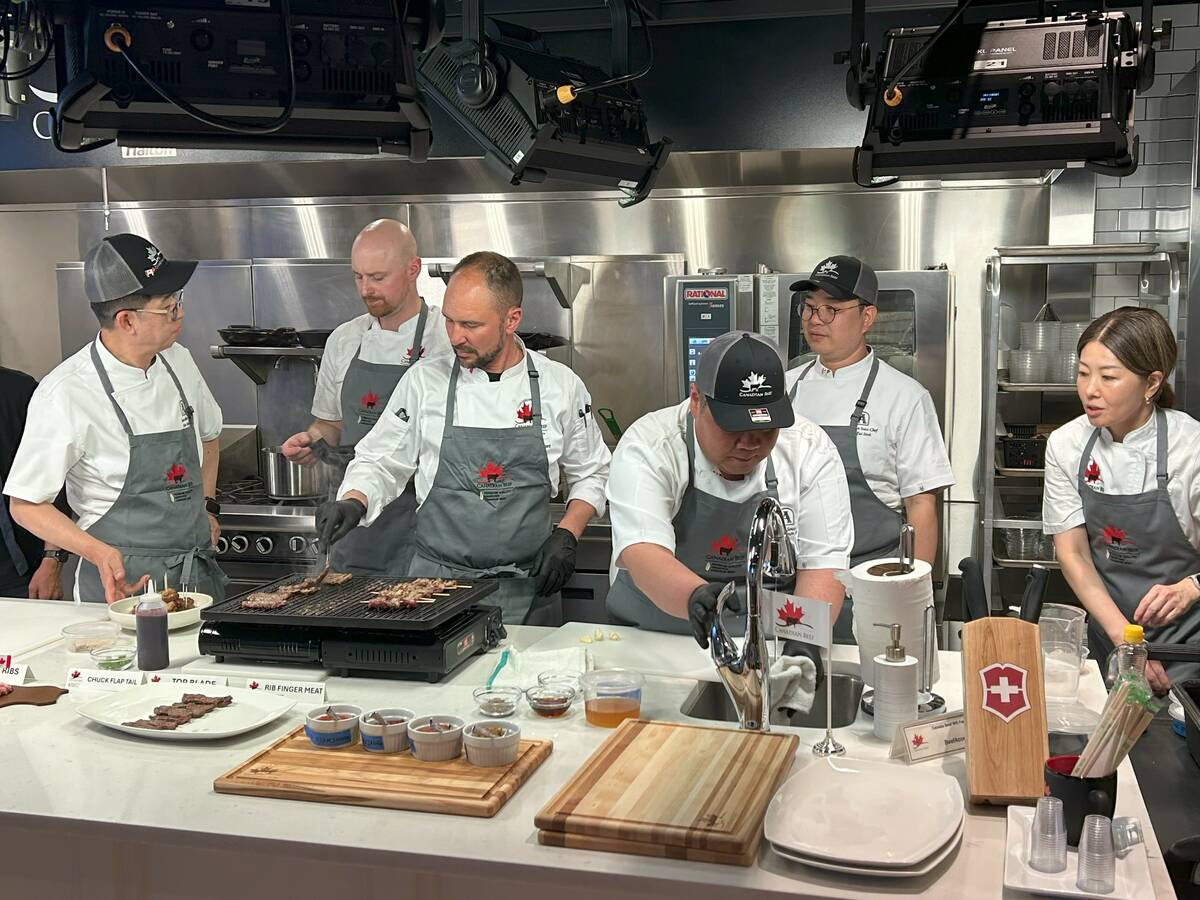
Promoting Canadian beef in Korea
Canada Beef reports on recent activities, including working with an influencer and an executive chef from Korea
If you are concerned about M. bovis in your cattle, speak to your vet about testing and surveillance. M. bovis pneumonia has a distinct pattern in the lungs on post-mortem. Within the lungs there will be hard, caseous material or multiple tiny abscesses. A definitive diagnosis of M. bovis can be made by taking a sample of affected lung or swabs of fluid from affected joints and submitting to a lab for DNA detection. In chronic cases lasting more than a month, an infectious arthritis will often be present. Some animals present for both BRD and lameness from arthritis. Others show only lameness from arthritis with or without a history of BRD treatment prior to lameness developing. In feed yards, this may change year to year depending on cattle source.
Determining which pathogens and sources are responsible for the clinical signs in your cattle is important, as not all arthritis and BRD cases are caused by M. bovis. In feeder cattle, infectious arthritis and BRD can also be caused by another bacteria, Histophilus somnus. In young calves, infectious arthritis can be caused by a variety of opportunistic environmental bacteria that enter the blood from an infected navel. It is also important to confirm that the lameness observed is truly infectious arthritis, and not actually toe tip necrosis, hairy heel (digital dermatitis), injury, or another source of lameness requiring a different treatment.
Mycoplasma bacteria are unique because they lack cell walls. Many antimicrobials kill bacteria by attacking the cell wall, which makes mycoplasma bacteria innately resistant to many types of antimicrobials. These include penicillin and ceftiofur, an antimicrobial commonly used on feed yards because of its short meat withdrawal. Work with your veterinarian to develop a treatment protocol for BRD, arthritis and other diseases on your operation to make sure you are using the most appropriate pharmaceuticals.
If you suspect that M. bovis is causing disease and mortality on your operation, talk to your veterinarian. Not all cases of chronic or non-responsive BRD or arthritis are caused by M. bovis. A vaccine has recently become available to reduce the incidence of M. bovis but has some logistical restrictions. These include a requirement for a booster dose 21 days after the initial vaccine and an antimicrobial-free window around vaccination time, as it is a modified live vaccine and can be accidentally killed by antimicrobials given in feed or by injection.
Infectious arthritis and chronic pneumonia are diseases that substantially affect cattle welfare. Good husbandry goes a long way towards improving recovery rates in these cases. In addition to the appropriate pharmaceutical treatment, affected cattle need prolonged recovery time in a pen with a low stocking density and easy access to feed and water. Keeping pens clean and providing a dry straw bed pack that all cattle can lie down on reduces the risk of further damage to affected joints, reduces barriers to getting to the feed bunk to eat and facilitates much-needed rest.

